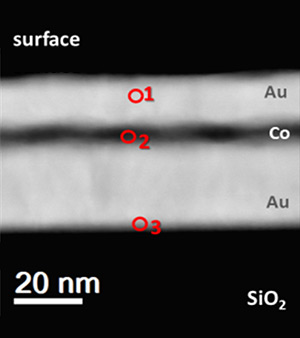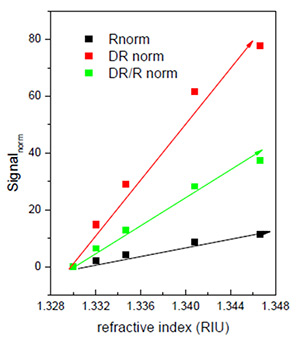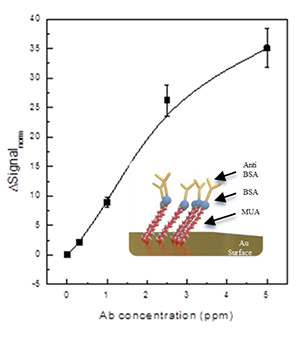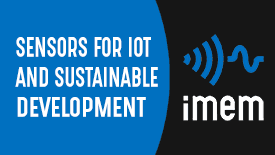Magnetoplasmonic sensing is a novel concept of active and multimodal optical detection based on materials that exhibit simultaneously plasmon driven optical and magnetic properties.
Typically, the transducer is a hybrid nanostructure composed by a magnetic metal or oxide moiety and a plasmonic moiety like Au and Ag. The plasmon induced optical response of these structures is modulated by the magneto-optical effect of the magnetic moiety, and vice versa.
Differently from the classical absorption or transmission optical detection modes employed in plasmonic sensor devices, the MPs sensing concept uses the magnetic field induced modulation of the optical properties and it detects the magneto-optical signal by Kerr or the Dichroism and it detects with larger sensitivity than the SPR detection.
The IMEM group works in three main lines:
- Development of MPs ATR transductors for sensing. The IMEM can growth epitaxial MP multilayers by sputtering with reduced roughness and soft magnetic properties. The employment of these structures for detection of VOCs and biomedical markers using Magneto-optical Kerr effect was demonstrated.
- Development and study of the magnetoplasmonics coupling in MPs nanostructures with localized plasmons. Different structures combining Au and Fe oxide were obtained and the relationship between the magnetic and plasmonic properties is investigated.
- Investigation of the Magneto-optical detection as optical sensing probe.
This activity is correlated to the research activity of the Magfun team on “Magnetic nanoparticles for biomedical applications and Magnetoplasmonic nanoparticles”.
Highlights
MPs heterostructures as plasmonic transducers for chemical and biomedical optical sensors.
Epitaxial grown Au/Co/Au multilayer are deposited onto different type of glasses adequate for the MPs detection of vapors and organic analytes. The thicknesses of the multilayers are optimized to maximize the plasmonic (SPR) and the magneto-optical plasmonic (MOSPR) signals in Kretschmann configuration. Tests performed using different concentration of organic vapors show that the sensitivity of the MOSPR technique is 8 times larger than the SPR one. application are focused on the detection of an antibody-antigen interaction, such as antiBSA-BSA with a sensibility by MOSPR 2 times larger than the SPR one.



Collaborations
- Department of Chemistry, Life Sciences and Environmental Sustainability, University of Parma, Italy. Prof. Andrea Secchi
- Chemistry Department, University of Pisa, Italy. Prof. Francesco Pineider.
- IMM- CNR, Lecce, Italy. Doc. Roberto Rella.
Main publications
1) “Modelling and nanoscale characterization of noble/ferromagnetic metal multilayers for enhanced magneto-plasmonic biosensing"
M. G. Manera, G. Pellegrini, P. Lupo, C. de Julián Fernández, F. Casoli, S. Rella, C. Malitesta, F. Albertini, G. Mattei, R. Rella.
Sensors & Actuators: B. Chemical 239 (2017) 100–112
DOI:10.1016/j.snb.2016.07.128
2) “Magnetoplasmonics”
G. Pellegrini, Valentina Bonanni, G. Campo, F. Pineider, C. Sangregorio, C. de Julián Fernández, F. Casoli, M. G. Manera, R. Rella, G. Mattei
B.Bhushan (ed.), Encyclopedia of Nanotechnology,
Springer Science+Business Media Dordrecht 2015
DO:I 10.1007/978-94-007-6178-0_100980-1
3) “Addressing the influence of localized plasmon resonance on the magneto-optical properties of cobalt ferrite nanoparticles”
G. Campo, F. Pineider, E. Fantechi, C. Innocenti, A. Caneschi, C. de Julián Fernández
Journal of Nanoscience and Nanotechnology – Special Issue on Spinel Ferrite 19 (2019) 4946–4953
Doi:10.1166/jnn.2019.16799
4) “Tailoring nanostructured surfaces with plasmonic/magnetic multifunctional response”
A. Serrano, O. Rodríguez de la Fuente, M. García-Hernández, G. Campo, C. de Julián Fernández, J. F. Fernández and M. A. García.
Applied Physics Letters, 113, (2018) 101908 -101911
DOI: 10.1063/1.5044697
5) “Plasmon-enhanced magneto-optical detection of single-molecule magnets”
F. Pineider, E. Pedrueza-Villalmanzo, M. Serri, A. Mekonnen Adamu, E. Smetanina, V. Bonanni, G Campo, L. Poggini, M. Mannini, C.de Julián Fernández, C. Sangregorio, M. Gurioli, A. Dmitriev and R. Sessoli.
Materials Horizons 6 (2019) 1148-1155
Doi:10.1039/c8mh01548a
6) “Functional magneto-plasmonic biosensors transducers: Modelling and nanoscale analysis”
M.G.Manera, G.Pellegrini, P.Lupo, V Bello, C.de Julián Fernández, F.Casoli, S.Rella, C.Malitesta, F.Albertini, G.Mattei R.Rella
Sensors and Actuators B: Chemical 239 (2017) 100-112
DOI: 10.1016/j.snb.2016.07.128








